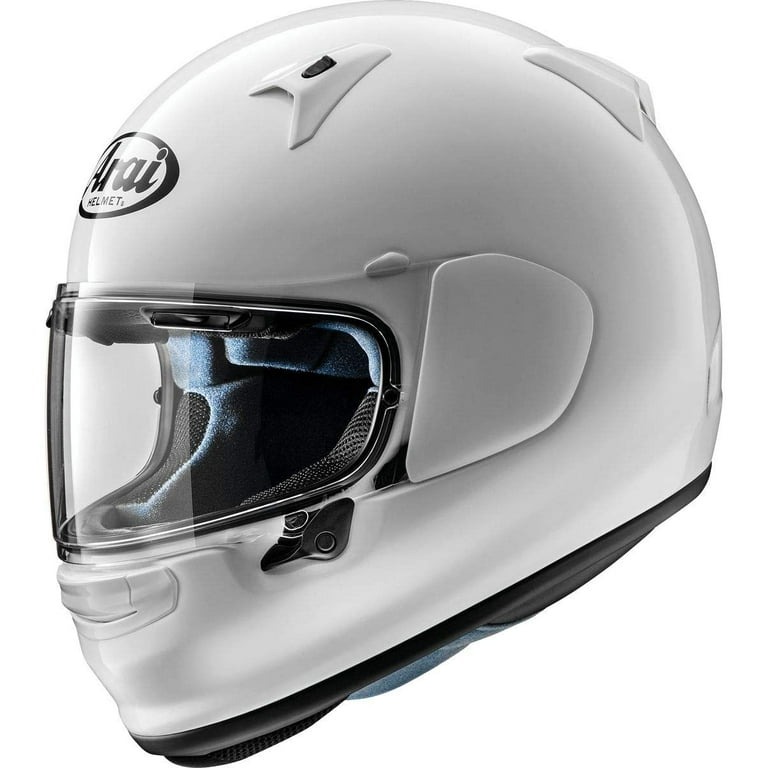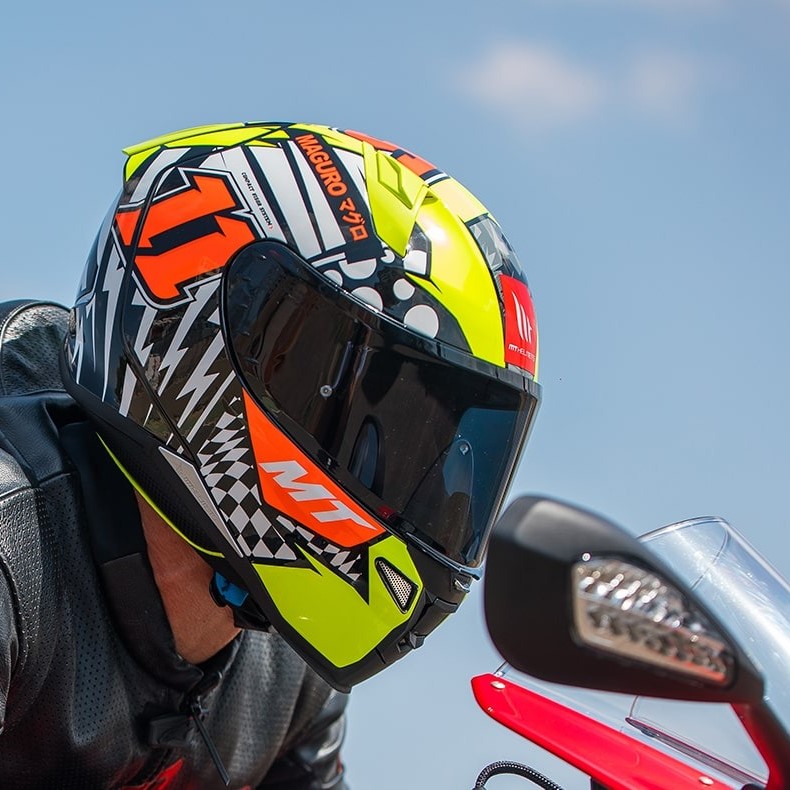Apr 1, 2025
Creative Ways on How to Customize a Motorcycle Helmet
The Basics of Motorcycle Helmet Customization
How to customize a motorcycle helmet? Personalizing your motorcycle helmet can set you apart and reflect your personality. Before you start to customize a motorcycle helmet, understand the basics. Choose a helmet that suits your style and safety needs. Make sure it fits well and has no damage. Gather all necessary materials for the customization process. These include sandpaper, primer, paint, and varnish. Remember to work in a well-ventilated area. Always protect the helmet’s interior and non-paintable parts. Use masking tape and plastic sheets. Wear protective gear for safety while handling paint and chemicals. With the right preparation and materials, you are ready to start your helmet customization project.
Choosing the Right Helmet for Customization
Choosing the right helmet is crucial for a successful customization. Start by selecting a helmet that fits well. It should sit snugly on your head without being too tight. Look for helmets with a smooth, clean surface. This makes it easier to apply paint and designs. Ensure the helmet meets safety standards. You can find this information on the label or manual. Go for a helmet with fewer vents and complex shapes. These are harder to work on. Think about the final look you want. Lighter colors can be a great canvas for bold, vibrant designs. Consider the helmet material too. Some paints adhere better to certain materials. Remember, the key is safety first, then style. Choose a helmet that will protect you on the road and look great after customization.
Preparing Your Helmet for Painting

Before you start to splash color on your motorcycle helmet, proper preparation is key. Here’s how to prepare your helmet for a fantastic paint job.
- Clean the Helmet: Begin by cleaning your helmet with soapy water. Remove grease, dirt, and old stickers. Let it dry completely.
- Sand the Surface: Lightly sand the helmet’s surface with fine-grit sandpaper. This will help the paint stick better. Wipe off the dust after sanding.
- Apply Primer: Use a high-quality primer suitable for the helmet’s material. Primer helps the paint adhere and provides a consistent base.
- Tape Off Areas: Protect areas you don’t want to paint. Use masking tape and plastic to cover visors, padding, and ventilation holes.
- Check for Flaws: Look for any cracks or flaws. Repair them before painting to ensure a smooth finish. Use body filler if necessary.
During these steps, always keep your work area well-ventilated. Gloves and a mask are important for safety. With the helmet prepped, you’re now ready for the creative part – painting and customizing your motorcycle helmet to reflect your unique style.
Selecting Paints and Materials
When customizing a motorcycle helmet, the paint and materials you choose are vital. Pick high-quality paints designed for use on helmets. These ensure longevity and safety. Look for paints that are both flexible and durable. They must resist chipping and the effects of weather.
Materials also play a critical role. For a professional finish, use automotive-grade spray paint. These come in various colors and finishes. Metallic, matte, and gloss are popular choices. Acrylics work well for detailed handwork. They dry fast and are easy to use.
For brushes, select ones with fine tips. These are great for intricate designs. Make sure they don’t shed bristles easily. A reliable airbrush kit is also essential for even, professional coats. Don’t forget the clear coat. It seals your design and adds a protective layer.
Ensure all materials are compatible with your helmet’s material. Also, consider environmental factors. Some paints and materials are more eco-friendly. Use products with low volatile organic compounds, or VOCs. This is better for the environment and your health.
Remember, the right products can make or break your customization project. Take your time to research and select the best paints and materials for your helmet.
Techniques for Applying Designs

Once you have your paints and materials, it’s time to apply your designs. Consider these techniques:
- Stenciling: Create stencils for precise shapes and patterns. Stick them on the helmet securely before applying paint.
- Freehand Painting: If you are confident in your artistic skills, go freehand. Use fine brushes for details.
- Airbrushing: For a smooth and professional look, use an airbrush. It’s great for gradients and larger areas.
- Decals: Apply decals for clean and detailed graphics. Make sure they adhere well and don’t bubble.
- Hydro Dipping: Immerse the helmet in water with a special film for a custom print. Practice first, as it can be tricky.
- Mask Off Sections: For geometric designs, mask sections with tape. Paint and remove the tape carefully.
Each technique requires patience and practice. Start with simple designs. As you gain confidence, try more complex ones. Remember to let each layer dry thoroughly before adding another. This prevents smudging and keeps your design neat. Use the right technique to bring your vision to life on your motorcycle helmet.
Airbrushing vs. Stickers: Comparing Customization Methods
Choosing between airbrushing and stickers is key in motorcycle helmet customization. Both methods offer unique benefits.
Why Choose Airbrushing?
Airbrushing is a popular method for those who want a premium, seamless look. It allows for intricate designs and color gradients. It takes skill, but the results can be stunning. With airbrushing, you can create truly one-of-a-kind designs. The downside? It’s more time-consuming and usually costs more. You need steady hands and patience.
The Advantages of Stickers
Stickers are quicker to apply and less expensive. They are great for clear, sharp images. Stickers can be easily replaced or updated. This method is perfect for beginners or those on a budget. However, stickers may peel over time and lack the personal touch of hand-painted art.
When deciding how to customize a motorcycle helmet, think about your skills, budget, and the look you want. Both airbrushing and stickers have pros and cons. Consider your options and choose what works best for you.
Protecting Your Custom Design: Sealants and Finish
After you’ve applied your design with meticulous care, it’s crucial to protect it for longevity. Use a clear coat sealant. This will shield your artwork from the elements and wear and tear. Here are the steps and tips to ensure maximum protection for your custom motorcycle helmet design:
- Choose the Right Sealant: Select a sealant that’s compatible with your paints and helmet material. Look for UV-resistant types to prevent fading.
- Apply Evenly: Spray the sealant in a well-ventilated area. Hold the can at a consistent distance for even coverage. Apply in thin layers.
- Allow to Dry: Give each sealant layer enough time to dry. This avoids drips or smudges that can ruin your design.
- Polish for Shine: Once the sealant is dry, consider polishing the helmet. This increases the shine and gives a professional finish. Use a soft, non-abrasive cloth.
- Inspect Your Helmet: Check for any missed spots or imperfections. A second coat maybe necessary for optimal protection.
Remember, the effort you put into sealing and finishing your custom design will determine how well it stands up to daily use. By choosing a high-quality sealant and applying it correctly, your custom motorcycle helmet will look great and last longer.
DIY Customization Ideas

When diving into how to customize a motorcycle helmet, your creativity is the limit. DIY customization allows you to express your unique style. Here are some inspiring ideas you can try:
- Personal Touch with Hand Painting: Grab your brushes and let your imagination run wild. Paint your favorite symbols, patterns, or characters on the helmet.
- Theme Designs: Go for a theme that resonates with you, like a favorite movie, band, or sports team, and design your helmet accordingly.
- Add Textured Effects: Using textured paints or adding materials like leather patches could give your helmet an edgy look.
- Incorporate Technology: Attach LED lights for a helmet that stands out at night. Ensure they are secure and don’t interfere with helmet safety.
- Use of Washi Tape: Washi tape comes in various patterns and is easy to apply for a fun, temporary look.
- Create a Collage: Apply a collage of stickers, photos, or fabric for a helmet that tells a story. Seal it well to last.
- Vintage Style: For a classic look, use retro colors and add throwback logos or racing stripes.
Your helmet could be a masterpiece or just a fun project. Always ensure safety is not compromised by your design. And when you’re ready to display your style, wear your DIY masterpiece with pride on the open road.
When to Seek Professional Customization Services
While DIY customization of a motorcycle helmet can be fulfilling, sometimes professional help is needed. Knowing when to seek professional services can save time and guarantee a quality result. Here are scenarios when you might want a pro:
- Complex Designs: If your dream design is complex, a pro can make it happen. They have the right tools and skills.
- High-Quality Finish: Pros can deliver a finish that’s hard to achieve at home. They use advanced techniques.
- Time Constraints: If you’re short on time, a professional can customize your helmet quickly.
- Durability Concerns: A pro’s work often lasts longer because of their expertise and materials.
- Safety Assurance: Pros ensure that safety is not compromised during customization.
Remember, pros have trained for this. They know how to customize a motorcycle helmet safely and effectively. Don’t be afraid to invest in their services for top-notch work.
More Details